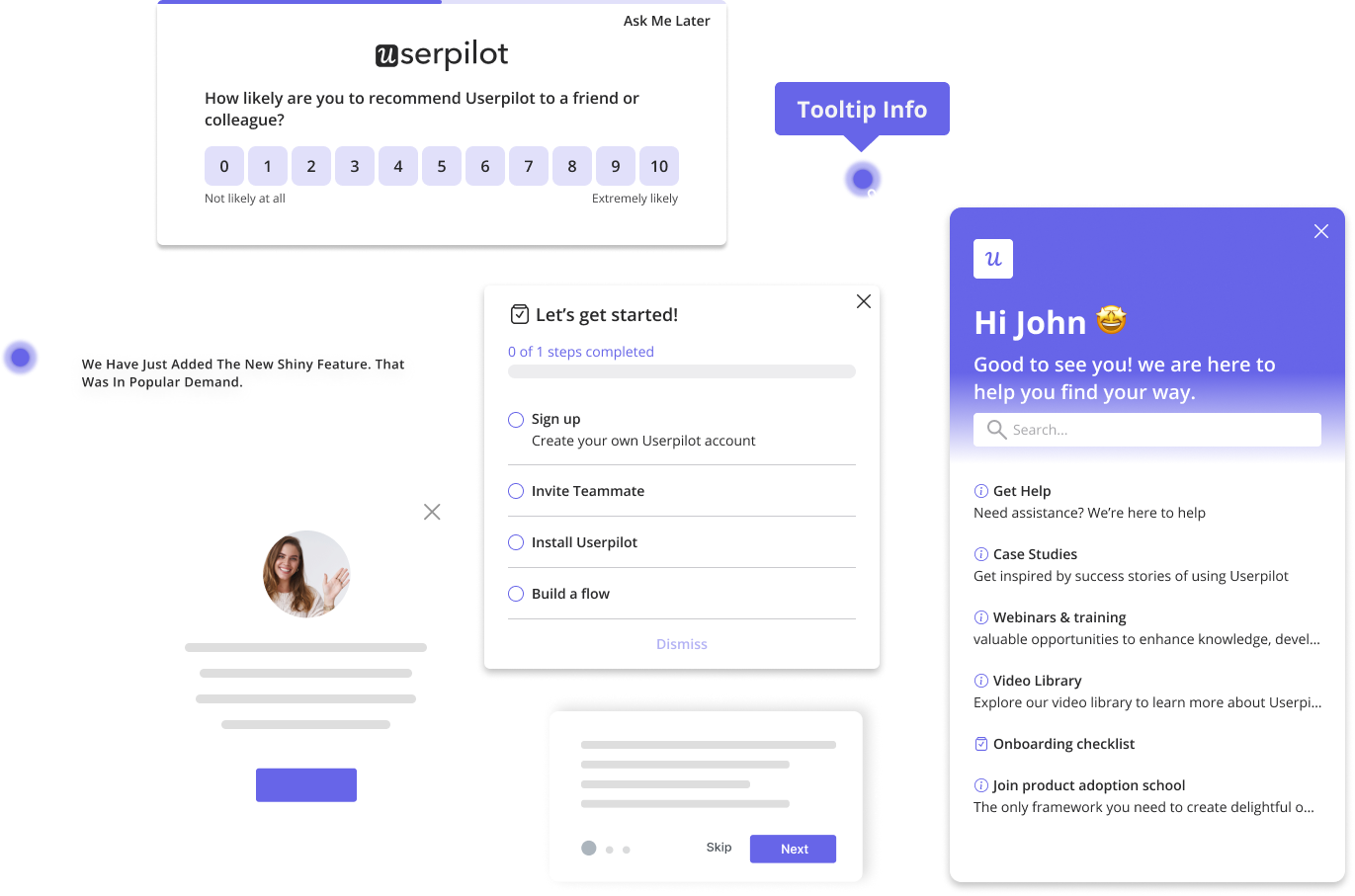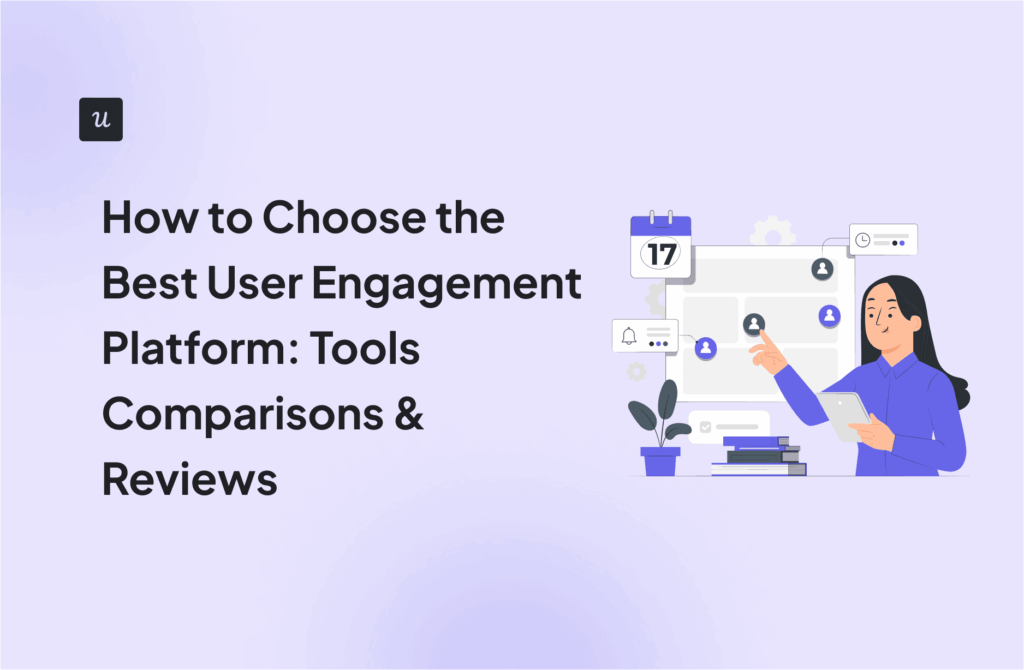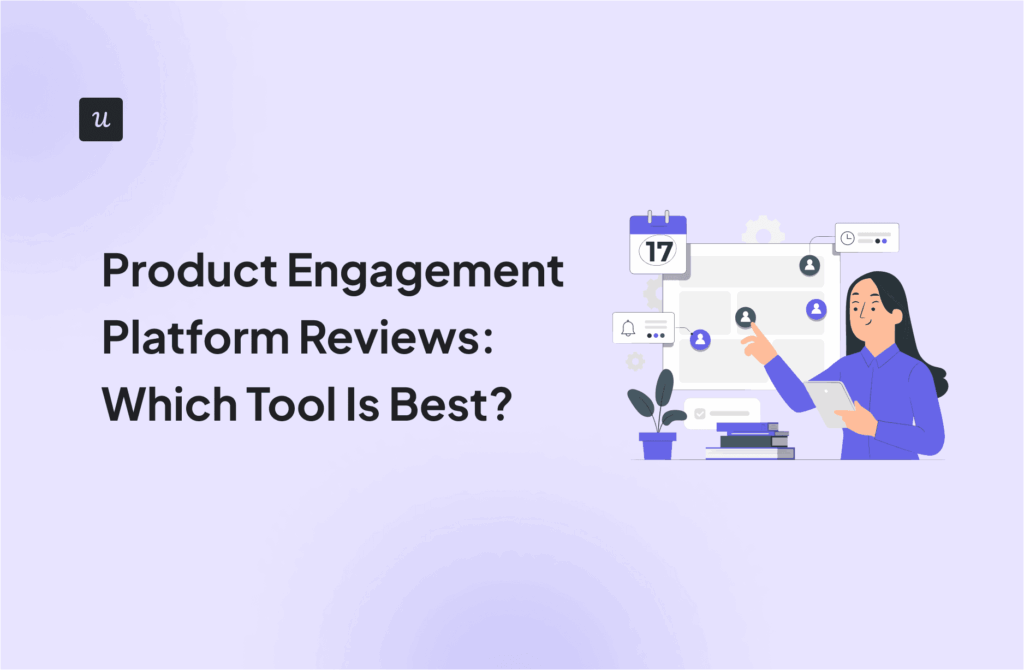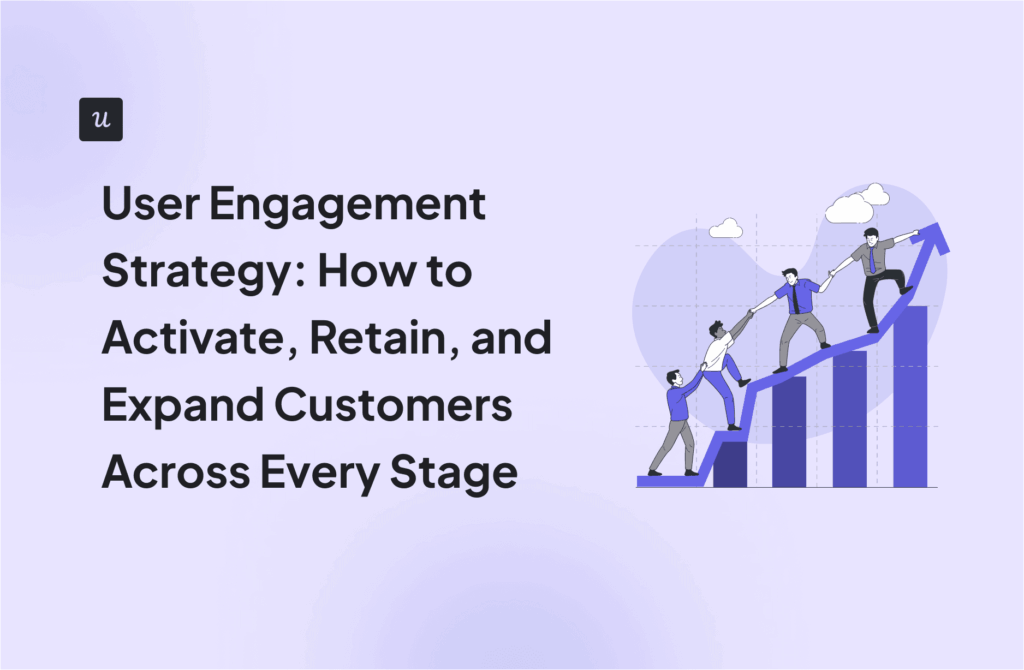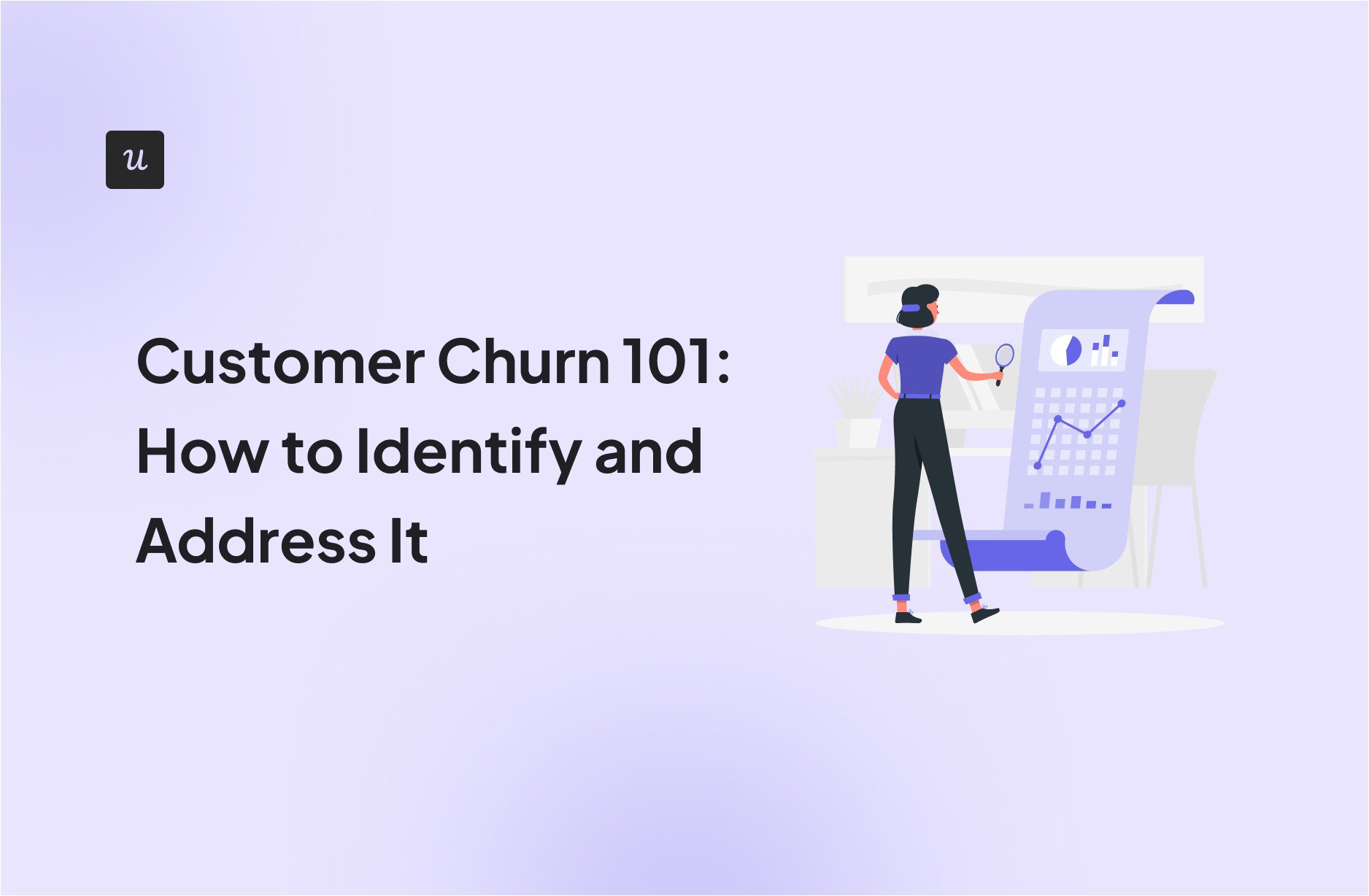
I’ve learned that sustainable growth doesn’t come from new customers alone. It comes from reducing customer churn and increasing expansion, and treating success as a product function. My team consistently maintains a net retention rate above 99% by focusing on product engagement and user segmentation.
In this blog post, I will break down how to calculate churn, identify at-risk users, and build a customer retention strategy that compounds, so you retain more customers and grow faster.
Try Userpilot Now
See Why 1,000+ Teams Choose Userpilot
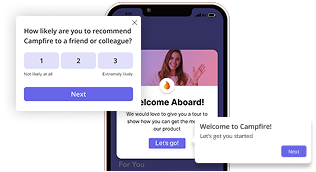
What is customer churn?
Generally speaking, customer churn occurs when a user cancels their subscription, doesn’t renew, or stops using your product entirely. It sounds simple, and it is. However, it’s one of the clearest signals that your product, messaging, or engagement isn’t delivering sufficient value or meeting customer satisfaction.
From my seat in Customer Success, I see churn less as a number and more as a story about our customer relationships: Where did we lose their trust? When did they stop seeing value? And more importantly, what signals did we miss before they left?
How to calculate churn rate?
Before you can fix churn, you need to measure your customer churn rate, and you have two main options depending on your company’s stage and tooling:
- Customer churn formula: (Customers lost during period ÷ Total customers at start of period) × 100. Most companies can track this in a spreadsheet, especially early on.
- Predictive churn modeling: Use tools to analyze behavioral signals before customers leave. This combines historical product usage, support tickets, sentiment scores, login frequency, and net promoter score responses to predict customer churn.
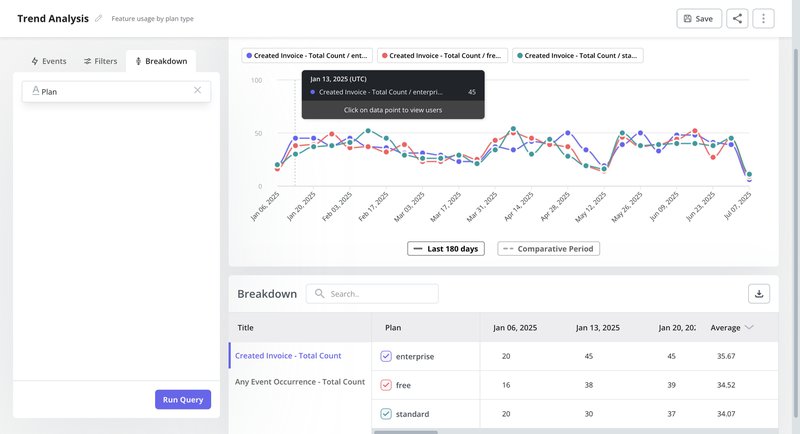
These signals help identify users likely to churn before they do. At Userpilot, this shift from reactive firefighting to proactive engagement helped me improve retention. How do I do that? I use product usage, customer feedback, and customer segmentation to reach at-risk users while they’re still engaged, when it still matters.
That’s the power of customer churn prediction models. They don’t just tell you who churned, they tell you why you are losing customers and when to step in.
What is a good average churn rate?
In B2B SaaS, a monthly average churn rate of 3-5% is normal. Under 3% is excellent.
Industry benchmarks show:
- SMB SaaS: 5-7% monthly churn.
- Enterprise SaaS: Under 1% monthly churn.
- Overall B2B median: ~3.5% monthly churn.
- A 10% monthly rate equals a 120% annual churn rate.
From what I’ve seen, your target depends on the number of customers. Enterprise clients stick around longer due to higher switching costs and longer contracts.
Why do users churn?
Customer churn happens for two main reasons: voluntary and involuntary.
- Voluntary churn occurs when users choose to stop using your product. This is usually the result of bad onboarding, poor customer service, misalignment between product features and customer goals, or a lack of perceived value.
These are preventable issues, and often, they’re visible early through low customer engagement, negative feedback, or stalled adoption. If you’re tracking product usage data and user signals with tools like Userpilot, you can intervene before these users leave.
- Involuntary churn happens when users leave unintentionally. Involuntary churn happens because of failed payments, expired credit cards, or organizational changes like the departure of a product champion.
Some of these can be addressed with automated dunning flows or proactive account monitoring. Others, like budget cuts or internal reorgs, may be harder to influence.
Both types of customer churn impact your growth and revenue churn rates, but voluntary churn is where most teams can make the biggest impact.
Why does it matter to retain customers?
Now, moving on to why retention should be your growth priority:
LTV increases as customer churn rate decreases
Improving retention stops monthly recurring revenue loss and also multiplies customer lifetime value. When churn drops, customer lifespans extend, and a user who sticks around for 100 months (vs. 40) gives you more chances to expand accounts and earn referrals.
I think about churn as a growth lever, and the math supports it:
- A 1% drop in monthly churn means a customer stays 2.5x longer.
- Increasing retention rates by just 5% can boost profits by 25% to 95%, depending on your business model (Bain). And they found that repeat customers tend to buy more often and spend more than newer customers, especially in later years.
- Returning customers generate 3x more revenue than first-time buyers.
That’s why reducing churn is the fastest way to boost LTV and retain profitable customers without increasing acquisition spend.
Lower CAC payback period and better margins
Customer acquisition costs are rising. SaaS businesses now spend an average of $702 to acquire a new customer, making retention critical to your bottom line. When users stay longer over a significant given period, your initial acquisition spend pays off faster.
At Userpilot, reducing customer churn accelerates our CAC payback period and strengthens margins. Users who stick around generate more revenue per dollar spent acquiring them.
The goal every SaaS company wants: net negative churn. This means expansion revenue from existing users outpaces what you lose from churned customers. According to Paddle’s research, companies with just 5% negative churn grow significantly faster than those replacing lost users every quarter.
SaaS businesses with a solid CAC-to-LTV ratio (3:1 or better) enjoy stronger profitability and lower burn. That’s the power of retention over pure acquisition.
Expansion and referrals come from loyal users
Your best customers already know your product, and they’re most likely to buy more. Repeat customers spend up to 67% more than first-time buyers, according to Bain & Company. Existing customers also have a 60-70% probability of converting compared to just 5-20% for new prospects.
I treat upsells and feature adoption as part of the retention loop. Instead of blanket campaigns, I create behavior-based segments in Userpilot and target them through:
- In-app prompts when usage spikes.
- Push notifications around feature milestones.
- Follow-up emails tied to specific actions.
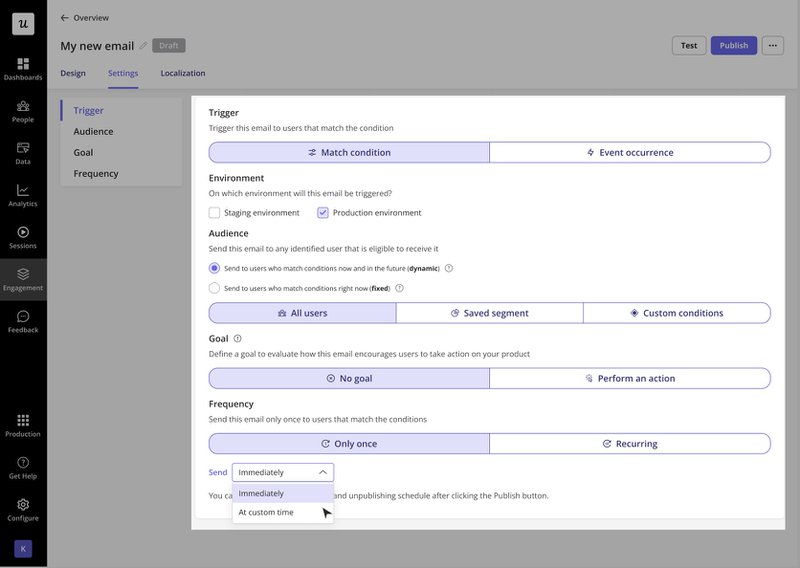
This isn’t just about revenue. Contextual feature promotion constantly delivers added value, keeping users engaged and less likely to churn. Testing different channels helps me optimize engagement for each user segment.
Happy users advocate, share internally, and bring others in. In fact, 83% of satisfied customers are willing to refer others, according to Texas Tech research.
You can see this live with Cledara, who used Userpilot to announce a feature:
Within a week, we were able to register several dozen companies already saying they’re interested in the new feature. With email, you’d get the same number of responses within two months.
– Gerard Masnou, Head of Support and Operations at Cledara
How to address customer attrition?
Churn isn’t something you fix in one moment. It’s a system of broken experiences across the customer journey. From sign-up to daily use, every friction point quietly adds up until you’re losing customers.
That’s why tackling attrition requires a proactive approach. You need to build systems that engage users early, deliver value consistently, and flag risk before it becomes a loss.
Here’s how to reduce churn across the entire customer lifecycle, from onboarding to long-term engagement.
Build personalized onboarding flows
Reducing churn starts the moment a user signs up. The faster they reach their first “Aha!” moment, the more likely they are to stick. That’s why your onboarding flow isn’t just a setup guide, it’s your retention strategy.
I believe an effective onboarding process is about guiding each new user toward the key action that defines activation for your company’s product. For some, it might be importing data. For other customers, launching a core feature. Once you’ve identified that action, build a flow that nudges users toward it using contextual walkthroughs, onboarding checklists, and progress nudges.
Take Attention Insight. Despite a simple sign-up and intuitive UI, they struggled with user activation. Only 47% of trial users created a heatmap analysis (their primary activation event), and just 12% explored the critical ‘Areas of Interest’ feature.
With Userpilot, they redesigned the onboarding experience using:
- Interactive walkthroughs to guide heatmap creation.
- Checklists to encourage tagging Areas of Interest.
- Tooltips and hotspots draw attention to overlooked features.
- Slideouts and success messages to celebrate key milestones.
- A resource center to give users contextual help right when they need it.
The results? Activation jumped to 69%, and engagement with advanced features nearly doubled.
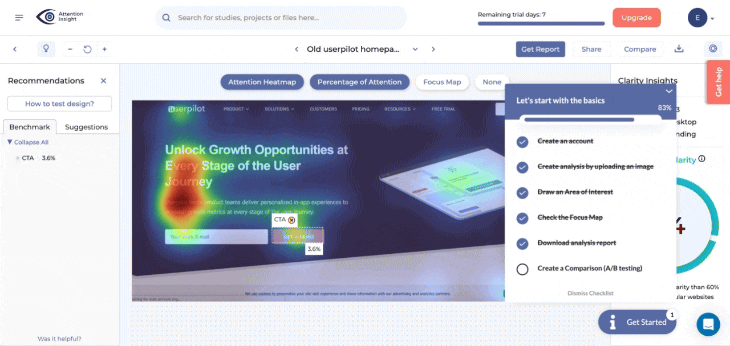
Implement lifecycle strategies to boost customer retention
I know for a fact that retention doesn’t happen by accident. It’s the result of continuous engagement at every stage of the customer lifecycle. You need to proactively educate, re-engage, and reward your customer base well beyond onboarding.
Key strategies include customer churn analysis, among other retention tactics :
- Lifecycle email marketing: Many SaaS businesses overlook post-sale messaging entirely. Our Userpilot x PITT research shows some teams don’t run any campaigns after conversion, missing critical retention opportunities.
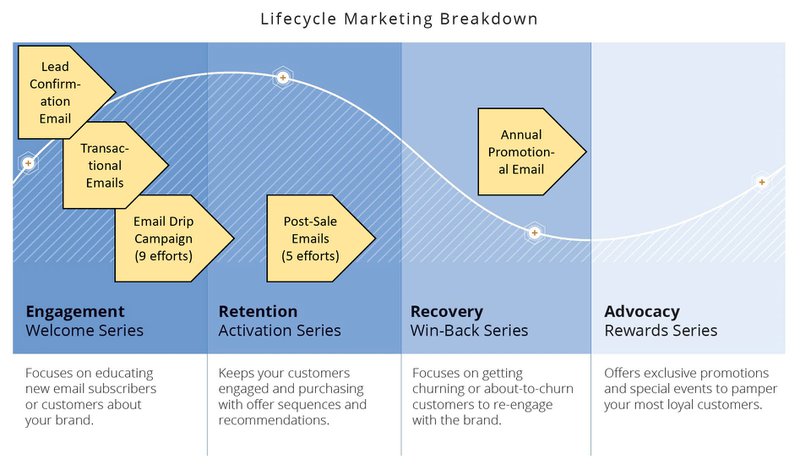
- Automated drip sequences: Guide users through feature discovery, ROI realization, and re-engagement if usage drops.
- Win-back and loyalty series: Target inactive customers with personalized offers. Reward customer loyalty with exclusive perks or beta access.
- Retargeting ads for expansions: Promote relevant add-ons or upgrades to your existing customer base.
- Contextual in-app announcements: Use tools like Userpilot to trigger feature announcements based on behavior and segments, without developer dependency.
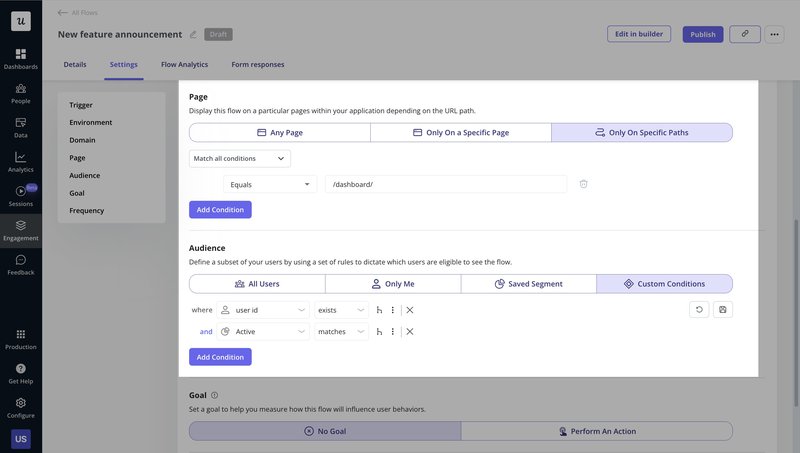
Schedule proactive check-ins with key accounts
High-value customers can quietly churn if you’re not actively maintaining the relationship or meeting customer satisfaction.
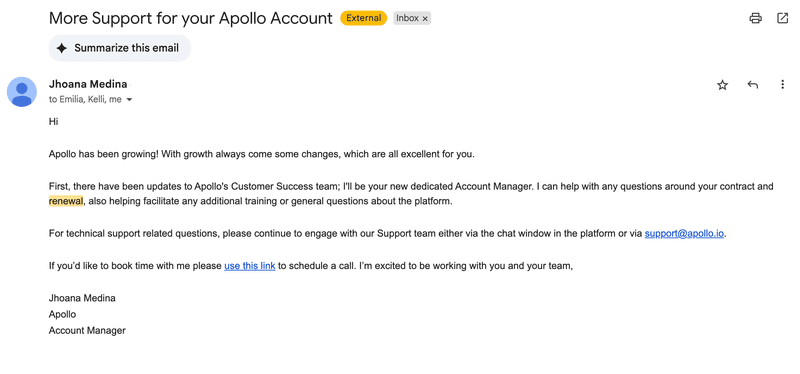
I prioritize check-ins with strategic accounts well before any red flags surface. These aren’t just “how’s it going” emails. They’re structured conversations tied to the customer’s goals, usage patterns, and product ROI.
The user/company profile feature in Userpilot makes this easy. It centralizes all account-level interactions, including product usage, feedback, and in-app behavior, so CSMs can track engagement health in real time. When usage dips or a key workflow goes inactive, it’s a cue to reach out and realign value before more customer slips away.
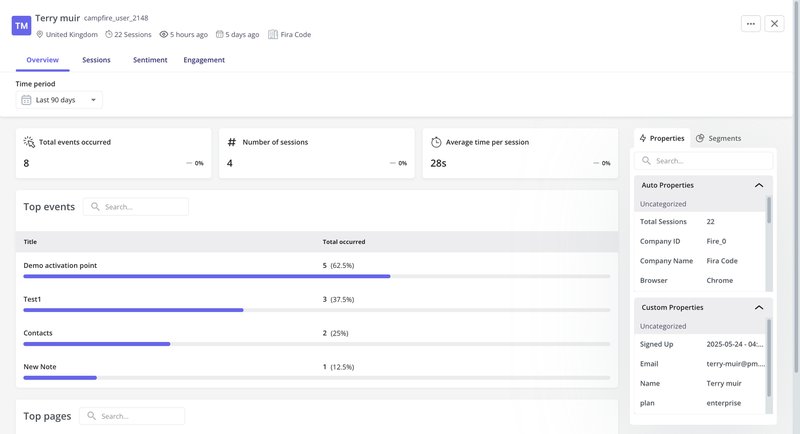
Use these touchpoints to:
- Review progress against success plans.
- Address open goals or underused features.
- Share new updates that can move the customer closer to their business outcomes.
This type of ongoing, strategic alignment, aka good customer service, builds trust and prevents surprise churn.
Establish usage baseline to identify at-risk customers
In my experience, not all churn signals are loud. Sometimes, they look like a few skipped logins or a sudden drop in feature usage. You need to define what “healthy” behavior looks like, then track when accounts fall below that line.
Start by identifying patterns in your most successful customers: Which features do they use regularly? How often do they log in? What actions correlate with retention or upsell?
If a user drops below your baseline, say no logins in a week, when your company’s product is meant for daily use, that’s your signal to act.
With Userpilot you can automate this process. You can set up custom events and health scores to trigger proactive outreach. For deeper insight, use session replay tools and machine learning models to watch what happens right before users disengage. Often, you’ll catch friction points you wouldn’t spot in aggregate data.
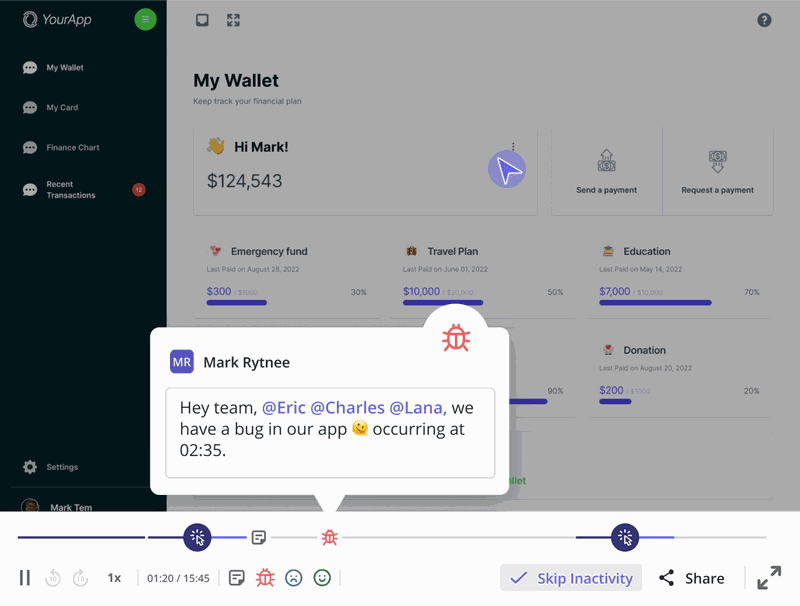
Reduce customer churn with Userpilot!
I’ve seen teams treating churn as a backend metric or support problem. But at Userpilot, I changed my approach. Retention isn’t something you fight at the last minute. It’s something you build into every part of the customer journey, from the moment someone signs up.
In this article, I shared the playbook we’ve used to drive Net Revenue Retention consistently above 99%. The key insight: churn is predictable. And if it’s predictable, it’s solvable, especially when you have visibility into how customers experience your product and the ability to act on it in real time.
If you’re serious about building long-term product growth and retaining your current customers, Userpilot is built for exactly that. Book a demo, and let’s talk about what retention looks like for your team and enhance your customer satisfaction.
FAQ
Why is customer churn a problem?
Customer churn eats directly into your Monthly Recurring Revenue (MRR). In SaaS, where your growth depends on retaining and expanding existing customers, churn isn’t just a signal; it’s a financial leak. High churn also means your acquisition efforts are just replacing lost users instead of driving net growth. Every percentage point matters.
What does churn mean in business?
Churn, or customer attrition, refers to the percentage of customers who stop using your product over a specific period. It can be measured as users lost (customer churn rate) or revenue lost (revenue churn). For subscription-based businesses, it’s one of the most critical metrics to monitor and reduce if you want to scale efficiently.
Is 10% churn rate good?
A 10% monthly churn rate is high, especially for SaaS. Healthy churn benchmarks are closer to 2–5% monthly for B2B, and slightly higher for B2C. Your ideal churn rate depends on your stage, pricing model, and average customer lifetime. If you’re seeing double-digit churn, examine your onboarding, product-market fit, or user engagement patterns. Tools like Userpilot can help you track these signals and intervene before users leave.

